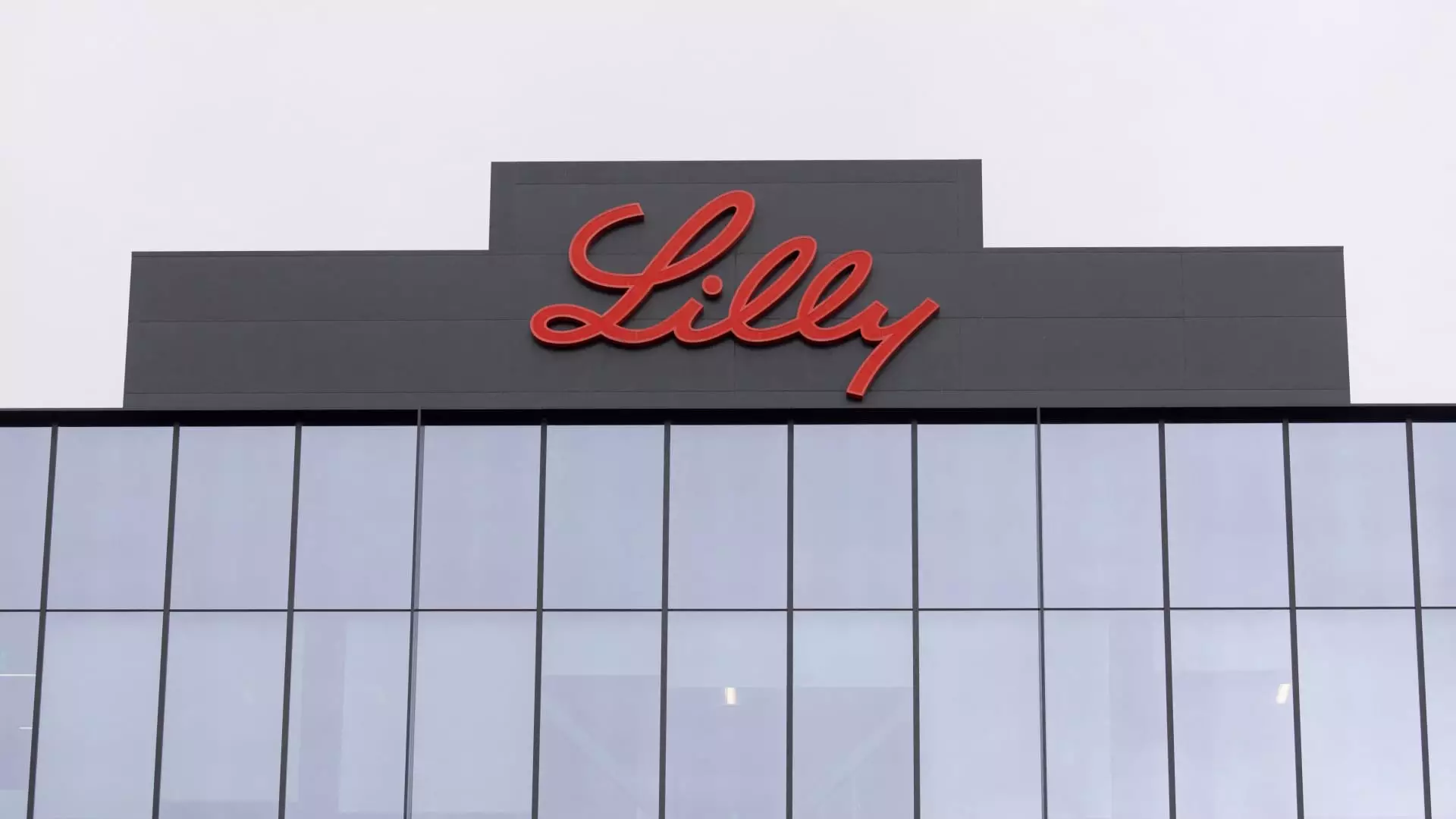Eli Lilly’s recent financial report for the third quarter has raised significant concerns among investors and market analysts. Falling short of profit and revenue forecasts, the pharmaceutical giant is grappling with disappointing showings from its key products, Zepbound and Mounjaro. This article aims to dissect the implications of these results, explore the underlying causes, and consider the company’s future trajectory amid the competitive landscape.
Eli Lilly reported adjusted earnings per share of $1.18, significantly lower than analysts’ expectations of $1.47. Revenue also fell short, coming in at $11.44 billion against the anticipated $12.11 billion. Such underperformance directly impacted investor sentiment, leading to a 10% decrease in stock value during premarket trading on Wednesday. This drop underscores the sensitivity of equity markets to pharmaceutical earnings, particularly in a sector where expectations can be exceedingly high.
The surprise reduction in profit guidance is particularly striking. Eli Lilly now anticipates adjusted earnings between $13.02 and $13.52 per share for the full year, a stark decline from the earlier range of $16.10 to $16.60. Making matters worse, the company has also slashed its revenue forecast, now projecting sales between $45.4 billion and $46 billion, a notable decrease from the previous cap of $46.6 billion. Such downward revisions are often viewed as a harbinger of long-term challenges, especially when they stem from a company’s flagship products.
Zepbound, Eli Lilly’s newly launched weight-loss drug, has encountered a rocky start, bringing in $1.26 billion in sales, which is far below the $1.76 billion analysts predicted. This misalignment raises questions about the drug’s adoption rate and market saturation. Furthermore, Mounjaro, a diabetes treatment that had previously shown promising growth, generated $3.11 billion in the quarter. While this figure marks more than a two-fold increase from the previous year, it still fell short of the expected $3.77 billion.
The issues do not stem solely from underwhelming demand; rather, Eli Lilly has been contending with supply chain challenges as well. For nearly a year, demand for Zepbound and Mounjaro has outstripped available supply, forcing the company to divert resources into expanding production capabilities. According to CEO David Ricks, recent improvements in U.S. supply have occurred, yet fluctuations in wholesaler inventories have further complicated the sales picture.
Strategic Adjustments and Future Plans
In response to these pressing challenges, Eli Lilly has acknowledged the need for adjustments in its marketing strategy. Ricks noted that advertising and promotion for Zepbound were postponed due to customer service issues; the company aimed to avoid driving frustrated customers to pharmacies that might not have stock on hand. Planned promotional efforts for Zepbound are expected to roll out in November, a move that could revitalize interest in the drug, but this raises questions about the efficacy of the marketing strategy employed to date.
As for production, Eli Lilly is optimistic about ramping up output in the second half of 2024, forecasting a 50% increase in manufacturing capacity compared to the same timeframe in 2023. Such ambitious targets are essential for reestablishing the company’s foothold in the incretin drug market. However, competing entities like Novo Nordisk are equally focused on enhancing their production capabilities, indicating that Eli Lilly could face ongoing pressure from rivals.
The Competitive Landscape
The competitive landscape for injectable diabetes and weight-loss treatments has intensified, making it imperative for Eli Lilly to act promptly and decisively. The approval of new entrants and the aggressive strategies of companies like Novo Nordisk add complexity to an already challenging environment. Whereas Eli Lilly is fighting for market share, compounding pharmacies are also making their voices heard, challenging the FDA’s recent decision to remove tirzepatide from shortage lists. These pharmacies are advocating for access to less expensive alternatives, which may erode Eli Lilly’s pricing power and market share.
Eli Lilly’s third-quarter results have undoubtedly highlighted the hurdles the company will need to address to regain investor confidence. With adjusting expectations, pressing production challenges, and a competitive landscape promising to grow more complex, Eli Lilly is at a pivotal juncture. The decisions made in coming months regarding marketing, supply chain management, and production capabilities will likely determine not just the immediate future of the company’s financial health, but its standing in the pharmaceutical industry as a whole. Investors and market watchers alike will need to keep a close eye on the developments from Eli Lilly as it navigates these uncertain waters.

